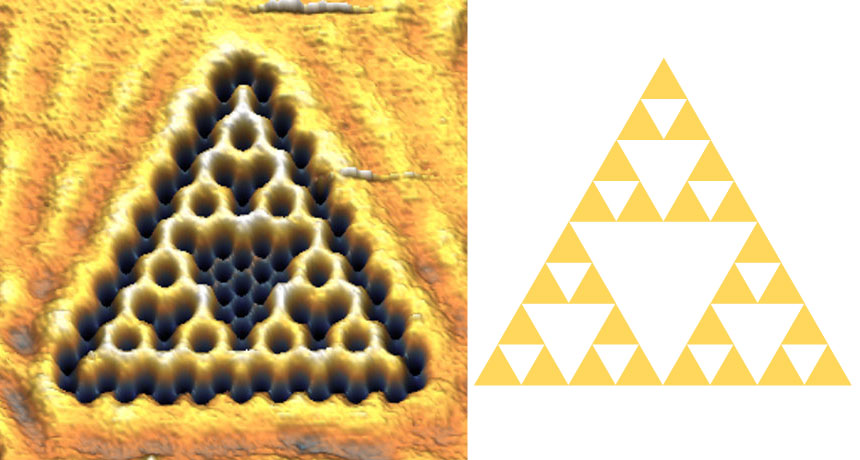Physicists wrangled electrons into a quantum fractal
Electrons within the structure behave as if they live in a fractional number of dimensions

ELECTRONS GO FRACTAL A fractal called a Sierpinski triangle (right) has been fashioned in the quantum realm (left), shown in an image indicating the density of electrons on the surface of copper.
S.N. Kempkes et al/Nature Physics